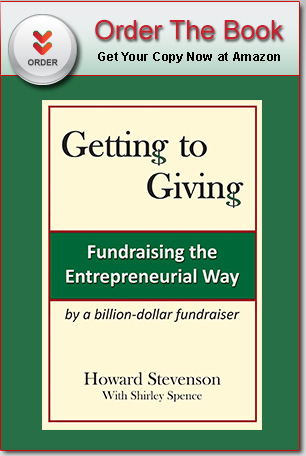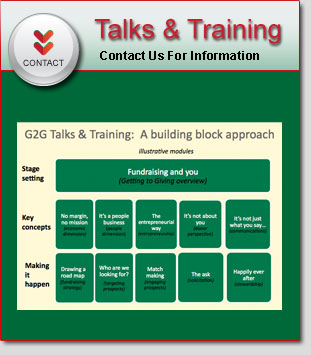I must say that bad as well as good experiences as a donor myself have informed my views on fundraising. Here are my top five pet peeves.
- Making assumptions. When someone shows up with a request for a cause that I have absolutely no interest in, I can only assume that they haven’t taken the time or trouble to find out what causes I already support, which would be a clue as to what I care about. I also am not motivated by being promised lots of recognition for my largesse. There’s nothing wrong with recognition, but my interest lies in making a positive impact in an area that I care about. A good fundraiser will figure that out.
- Phony friend. It’s not that I don’t like people, but – let’s face it – we both know why you’re here. There’s a danger confusing fundraising with friend-raising. Fundraising is about selling. You have to be pleasant, of course, but it’s more important to establish a professional, businesslike relationship. Over the years, I have been fortunate to make some good friendships through my philanthropic work, but that’s a bonus, not the main intent.
- Poor customer service. I ask that my gift be attributed to my charitable foundation; the invoice cites me personally; I have to call to have it corrected. I’m trying to reach the head of development; my call gets bounced to three different lines; and I end up in voicemail. I agree to buy two tickets to a fundraiser; and discover they’ve deducted $3,000 from my $10,000 gift for a whole table. I could go on… you get the idea. It’s about sales and service.
- The magic words. Here’s a question that I suggest fundraisers and nonprofit leaders ask themselves: “Do we say thank you enough?” Formal recognition is not my major motivation for giving (see above) but I was a little nonplussed when a very substantial, repeat gift was acknowledged with a three line email. Another example: Not long after my wife and I made a major capital commitment, the organization sent a form letter requesting that we increase our annual gift by 1/200th the amount of the gift we had just made. I also gently pointed out to one organization where I was a board member and volunteer fundraiser that it’s not all about money; donors’ time and talent are as valuable as their treasure.
- Wasted money. When I received six (expensive) glossy brochures from the same outfit in six weeks, it had the opposite of the desired effect; I was less, not more, inclined to give. Nonprofits have to walk a fine line, when it comes to real and perceived spending. An attractive space for museum members makes sense; executive suites for administrators do not. That said, this cartoon reminds me that you also can err in the other direction.

Image Source: Grantland, http://www.grantland.net
I do want to stress that I derive tremendous satisfaction from contributing to causes that I feel are doing important work, and doing it well. However, unsatisfying experiences before, during or after a contribution do inform my giving choices. Giving is a voluntary transaction, and donors have lots of choices. Never forget that.



